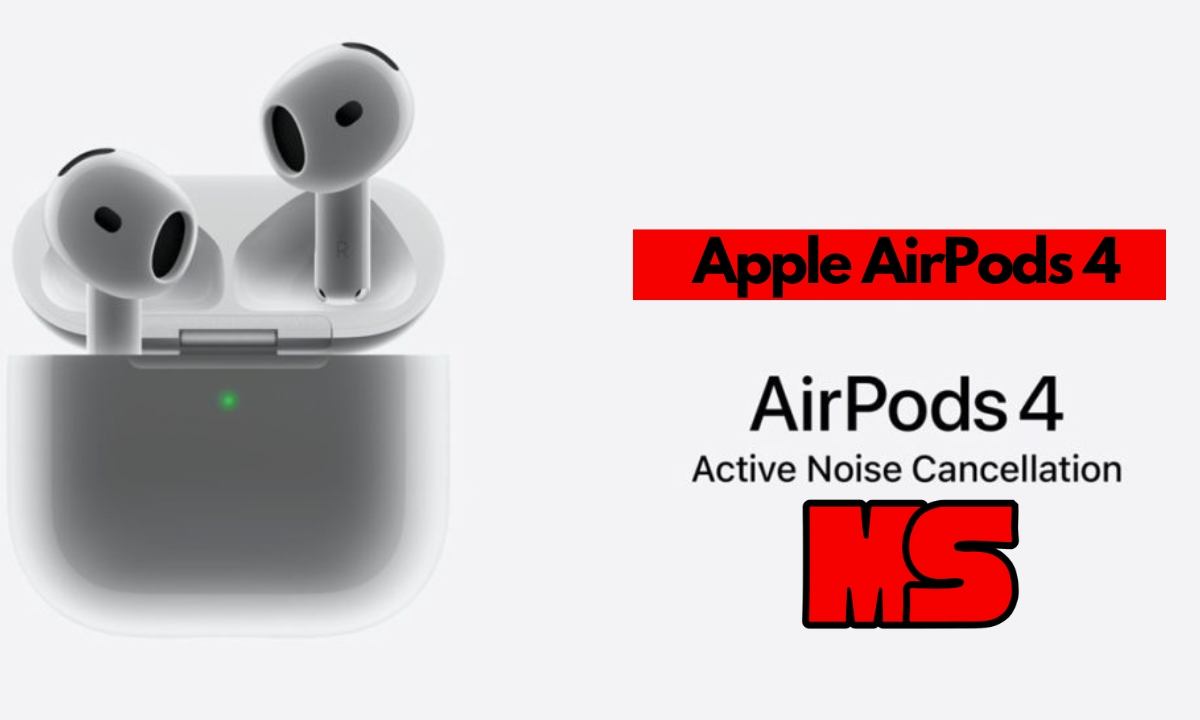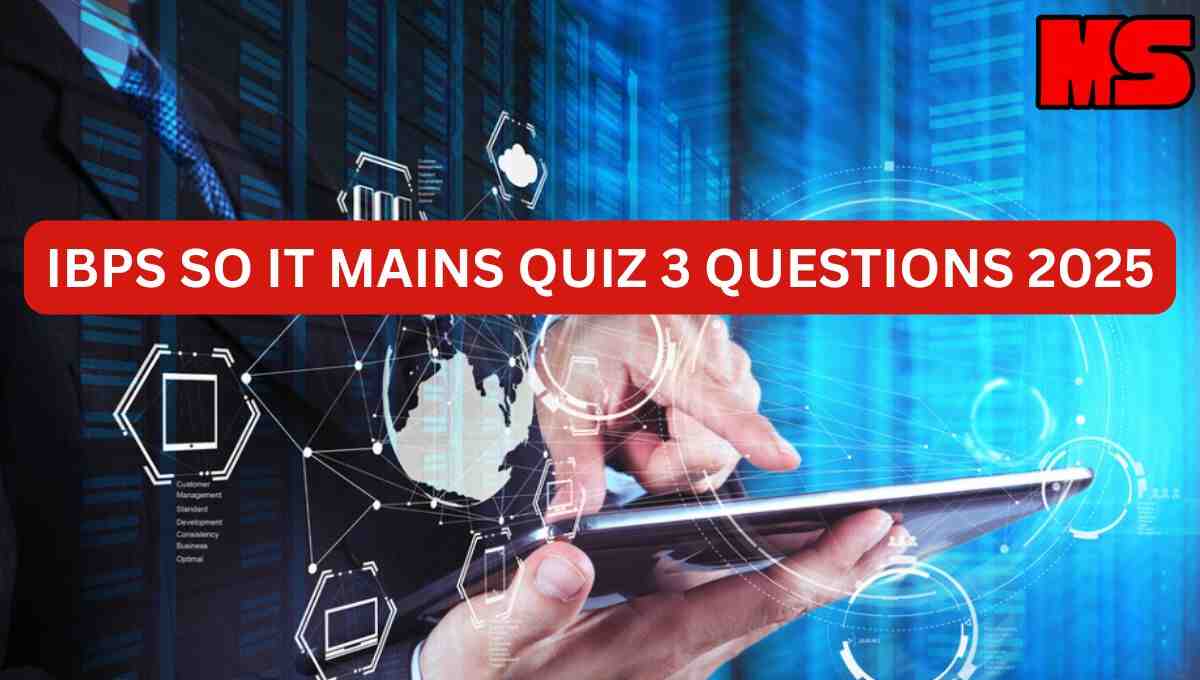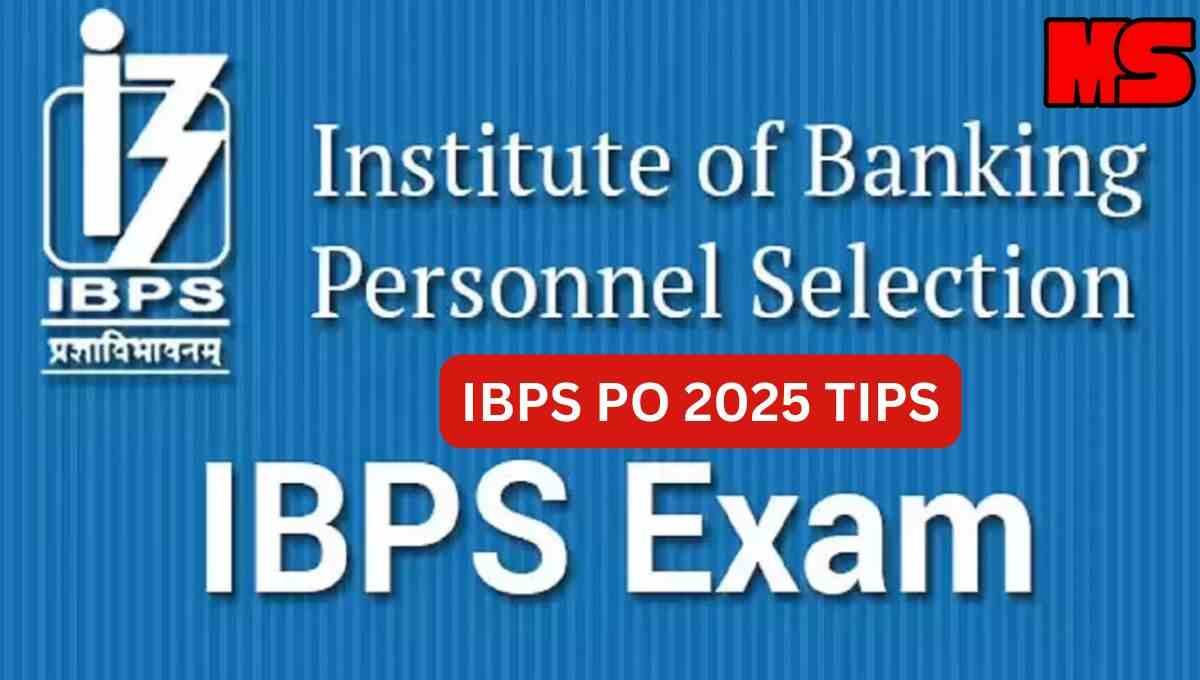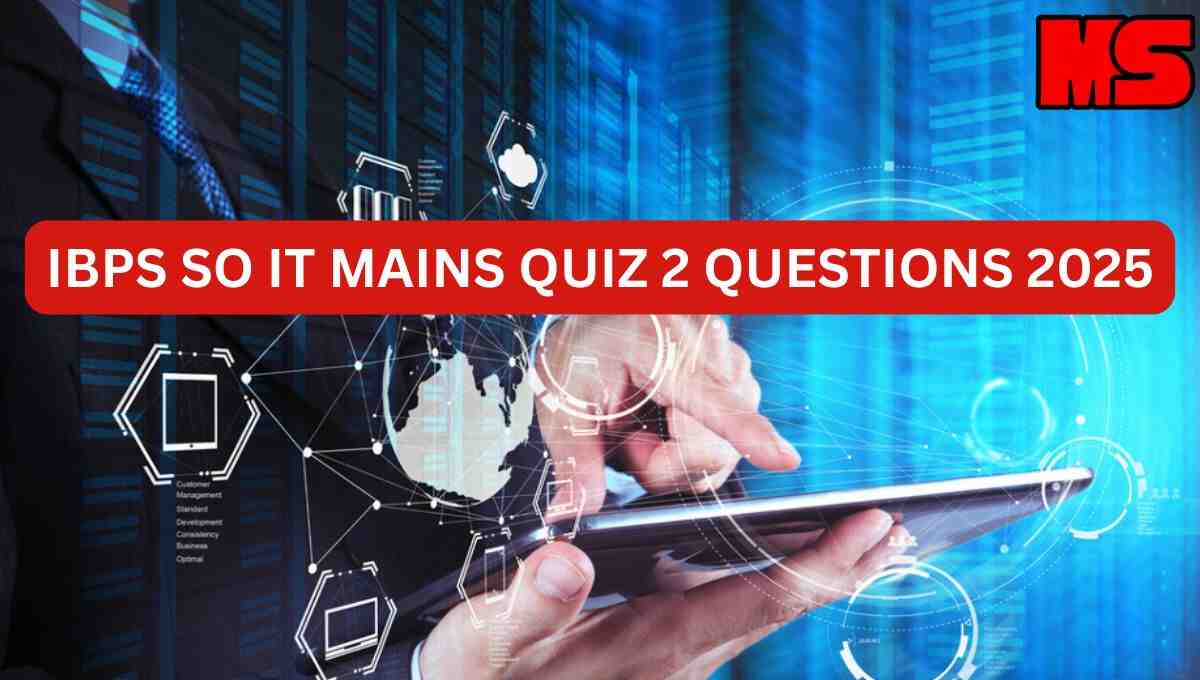For preparing for the IBPS SO IT MAINS, you must focus on different things. Well, there are different patterns which is followed by IBPS in different years. So, you must stay connected with the pattern and move with the relevant topics. We must suggest that you must prepare each topic in detail related to the IBPS SO IT MAINS, so that you can get the answer to each question in the exam.
Well, it is seen that the IBPS SO MAINS consists of the basic conceptual questions from each topic. So, do read each topic in detail and analyse it to score more marks in the exam. IBPS SO IT MAINS QUIZ 3 Questions 2025 read the quiz questions below:
IBPS SO IT MAINS QUIZ 3 Questions 2025
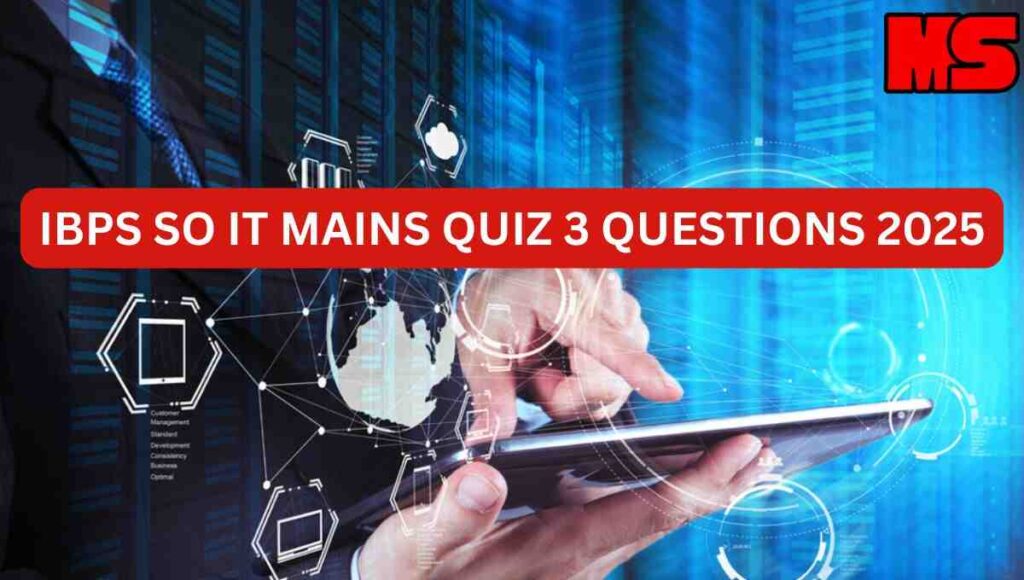
Here are some questions for the IBPS SO IT that you can move with. So, do analyse your performance by answering these questions. After reading the question, write down the answer in a notebook and match your answer with the correct answer. It will help you know about your performance. You can check how many marks you score in an examination. So, go and start the quiz and evaluate your performance.
1. The processes that keep track of all mobile hosts visiting the area is
- (A) Home agent
- (B) Mobile agent
- (C) Foreign agent
- (D) All of the above
Solution: (D) All of the above
A foreign agent is a key component in Mobile IP that keeps track of mobile nodes visiting its network, it’s the combination of the foreign agent, home agent, and the mobile node itself that work together to manage host mobility.
2. The hosts which are basically stationary hosts who move from one fixed site to another from time to time but use the network only when they are physically connected to it are called –
- (A) Migratory hosts
- (B) Stationary hosts
- (C) White hosts
- (D) Random hosts
Solution: (A) Migratory hosts
The Roaming Hosts move from one place to another, but they are not able to maintain a single network. Or you can say that they have the availability of the different networks. This category is similar to the mobile hosts, for example, tablets, Androids, laptops, and iOS.
3. The hosts who compute on the run and want to maintain their connections as they move around
- (A) Migratory hosts
- (B) Stationary hosts
- (C) Mobile hosts
- (D) Random hosts
Solution: (C) Mobile hosts
Mobile hosts are a category that can easily roam around in a specific area. These hosts help to get the connection, but it is not continuous. Some of its examples are mobile phones, laptops, smartphones, etc.
4. In open loop congestion control techniques, the decisions are based on the
- (A) without regard to the current state of the network
- (B) with regard to the current state of the network
- (C) with regard to the choice of the host
- (D) without regard to the choice of the host
Solution: (A) without regard to the current state of the network
In open loop congestion control techniques, the decisions are based on the without regard to the current state of the network. Or you can say that the decision is based on the pre-defined policies and parameters.
5. What is the type of network in which the routers themselves are mobile?
- (A) Wide Area Network
- (B) Mobile Ad hoc Network
- (C) Mobile Network
- (D) Local Area Network
Solution: (B) Mobile Ad hoc Network
Specifically, it is known as a Mobile Ad Hoc Network. It is a type of network that acts as a router. In which the nodes revolve around and cause the network topology.
6. What is the routing algorithm used in MANETs?
- (A) Shortest Path First
- (B) Routing Information Protocol
- (C) Distance Vector Protocol
- (D) Ad hoc On -demand Distance Vector Protocol
Solution: (D) Ad hoc On -demand Distance Vector Protocol
In MANET, you can see that it uses the routing algorithms, which are classified as reactive, hybrid, and proactive. These are three different categories which consist of the protocols, including DSDV (Destination Sequenced Distance Vector), DSR (Dynamic Source Routing), AODV (Ad hoc On-demand Distance Vector), and others.
7. In closed loop congestion control techniques, the decisions are based on the –
- (A) concept of a feedback loop
- (B) concept of a forward loop
- (C) concept of current state of network
- (D) None of these
Solution: (A) concept of a feedback loop
8. While booting the system the IP address is
- (A) 1.1.1.1
- (B) 1.1.0.0
- (C) 0.0.1.1
- (D) 0.0.0.0
Solution: (D) 0.0.0.0
In the booting system, you can see that it uses 0.0.0.0 IP address when it gains the IP address from the DHCP service. It is the address that says it is still in progress, and the device is progressing through the booting process in the system.
9. The solution to decrease the load on the network when congestion occurs is
- (A) splitting the traffic over multiple routes
- (B) increasing the transmission power
- (C) usage of spare routers
- (D) denying service to the users
Solution: (D) denying service to the users
10. Packet discard policy is implemented in
- (A) Physical layer
- (B) Data link layer
- (C) MAC layer
- (D) Network layer
Solution: (D) Network layer
Packet discard policies consist of the routers that use these policies to maintain the integrity of the packet flow. It helps determine the packet based on different factors like error, network congestion, and packet priority.
Related:
- IBPS SO IT MAINS QUIZ 2 QUESTIONS 2025 – Detailed Solutions
- IBPS SO IT MAINS QUIZ QUESTIONS 2025 – Detailed Solutions
- IBPS SO IT OFFICER MAINS 2025- Detailed Syllabus with PDFs Links
Ananya Shree is a versatile content writer who loves making complex topics easy to understand. She writes about trending keywords for the audience. Ananya’s goal is to help people interestingly learn about each topic. Moreover, in her free time, she enjoys exploring trending topics.



